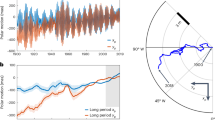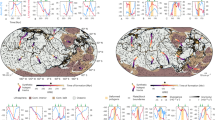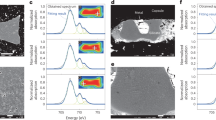Abstract
To his recent communication1, proposing that the cause of convection in the mantle is chemical, Dr. Stacey added a note in proof attacking the idea used by me2,3 of a gradual growth of the Earth's core to give a tentative explanation of continental drift. He makes the objection that the settling of the Earth's core from an undifferentiated Earth, formed by the accretion of iron and silicate bodies like the meteorites, would release an amount of energy greater by an order of magnitude thanthat which would have been conducted through the Earth's surface since 3,000 million years ago, when I suggest separation began, supposing the geothermal gradient had always its present value. I do not think Stacey's objection is valid. I have a detailed paper in preparation giving an account of the thermal history of the Earth, assuming that convection in the mantle is possible: naturally this differs radically from the thermal history of the Earth previously presented by those4 who have only assumed conduction in the mantle.
Similar content being viewed by others
Article PDF
References
Stacey, F. D., Nature, 197, 582 (1963).
Runcorn, S. K., Nature, 193, 311 (1962).
Runcorn, S. K., Nature, 195, 1248 (1962).
Jacobs, J. A., Handbuch der Physik, 47, 364 (Springer-Verlag, 1956).
Urey, H. C., The Planets (Yale Univ. Press, New Haven, 1952).
Urey, H. C., in Physics and Astronomy of the Moon, edit. by Kopal. Z., 481 (Academic Press, 1962).
Author information
Authors and Affiliations
Rights and permissions
About this article
Cite this article
RUNCORN, S. Growth of the Earth's Core. Nature 197, 992 (1963). https://doi.org/10.1038/197992a0
Issue date:
DOI: https://doi.org/10.1038/197992a0
This article is cited by
-
Discussion of the new kinematic mantle convection theory
Pure and Applied Geophysics PAGEOPH (1973)



